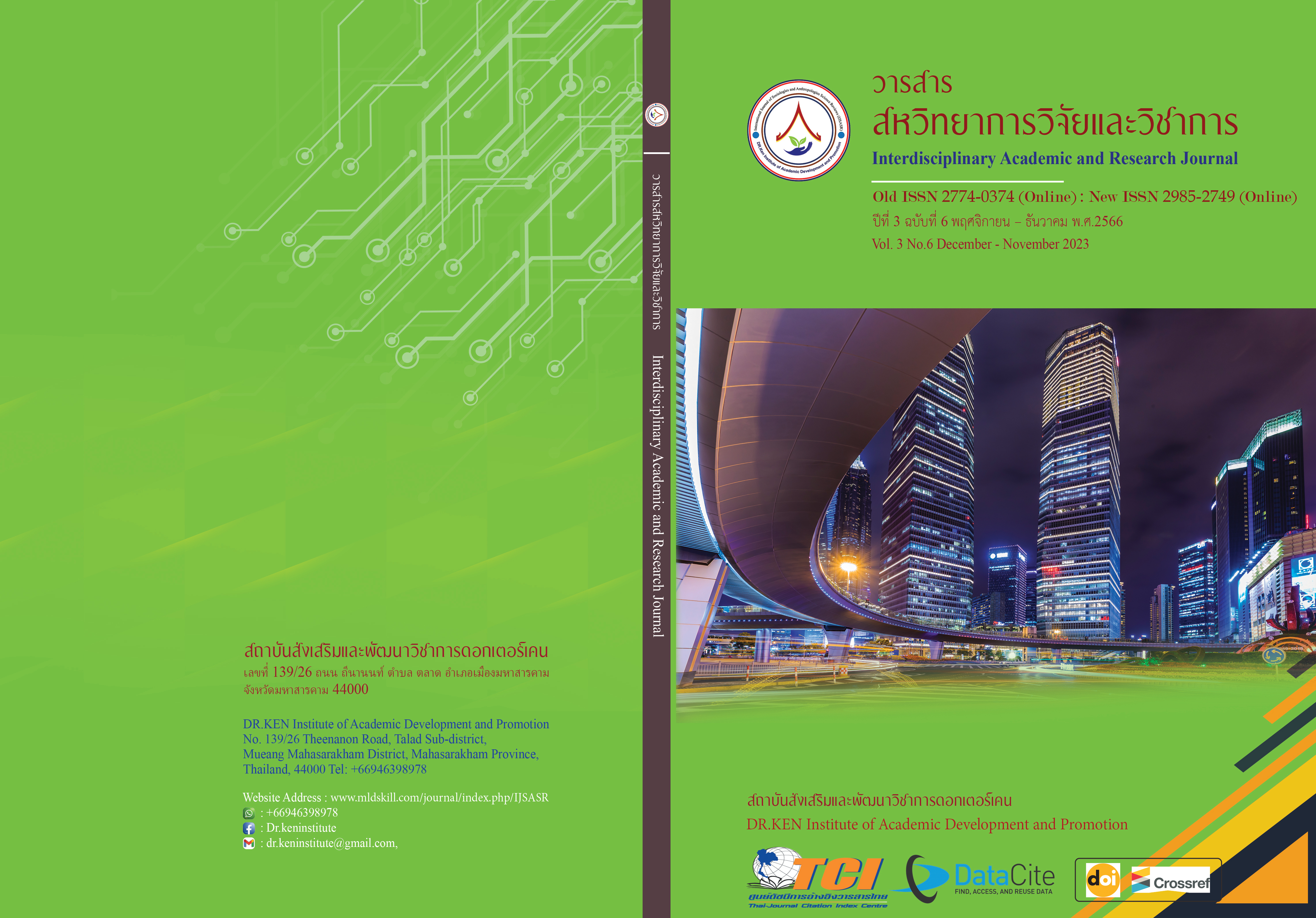Cultural Management to the Concept of Creative Cultural Tourism
DOI:
https://doi.org/10.60027/iarj.2023.272810Keywords:
Management; , Culture; , Creative tourismAbstract
Background and aim: The evolution of creative cultural tourism is intricately linked to the adept application of theories, principles, concepts, practices, and knowledge pertinent to a specific subject. The successful implementation of cultural management strategies involves adapting these elements to the contextual nuances of the surroundings. This integration, in turn, catalyzes the advancement of creative cultural tourism—a form of travel intricately tied to the exploration of history, arts, culture, community traditions, and the distinctive attributes of places. It transcends the conventional tourist experience by fostering direct engagement with the custodians of the culture, thereby imparting added value to the historical, artistic, and cultural dimensions of a locale. Unlike ventures solely geared towards community income, creative cultural tourism prioritizes the preservation and celebration of community values. In essence, it serves as a bridge between tourists and the rich tapestry of a community's heritage, contributing not only to economic development but also to the perpetuation of intrinsic cultural worth.
Methodology: This study used document analysis and related research methods. Analyze the content and present it descriptively according to the study objectives.
Results: present cultural management leading to the development of creative cultural tourism, which stakeholders can implement to affect the national economic development at a low cost. the most The author analyzed 4 issues as follows: (1) rehabilitation issues to deal with lost or degraded cultures so that they can be restored to their original condition, (2) conservation issues to preserve the existing culture, no matter what type of culture, for as long as possible and be able to use it to the greatest benefit, (3) the issue of promotion and support is to give importance and expand the scope of the project or activity to be of better quality and completeness, (4) the issue of cultural application It is taking something related to existing culture and using it by adapting it appropriately to the current conditions, whether it is changed in culture, traditions, society, ideas or technology.
Conclusion: Cultural management leads to the development of creative cultural tourism that stakeholders can use to influence national economic development. In the analysis, there are 4 important issues: restoration, conservation, promotion, and support. and application of culture It emphasizes preserving, promoting, and adapting existing culture to create benefits and enhance cultural tourism that benefits both the community and the country in the long run.
References
กรุงเทพธุรกิจ. (2558). วัฒนธรรมรุกงานวิจัยทุนทางวัฒนธรรมต่อยอดสู่การพัฒนาประเทศ. Retrieved 28 November 2015 from : www.mculture.go.th/ewtadmin/ewt/.../article_fileattach_20170119144708.doc
กาญจนา จันทรชิต. (2556). การท่องเที่ยวไทยฟื้นตัวแล้วหรือยัง?. Retrieved on 12 January 2023, from : http://www.fpojournal.com/tag
ทิศ ทาหอม และ สุนันท์ เสนารัตน์. (2561). การประยุกต์ใช้ทุนทางวัฒนธรรมกับการพัฒนาชุมชนท้องถิ่นอีสาน. วารสารวนัมฎองแหรกพุทธศาสตรปริทรรศน์. 5 (1), 15-24.
พระธรรมปิฎก (ประยุทธ์ ปยุตฺโต). (2538). การพัฒนาที่ยังยืน. กรุงเทพมหานคร : โรงพิมพ์มูลนิธิโกมลคีมทอง.
พลอย มัลลิกะมาส. (2554). แปรรูปวัฒนธรรมท้องถิ่นอย่างให้ได้เงินล้าน. Retrieved on 13 June 2022 from: www.tcdcconnect.com.
วรวิทย์ อวิรุทธ์วรกุล. (2553). เศรษฐกิจสร้างสรรค์และเศรษฐกิจพอเพียง : ขัดแย้งหรือสอดคล้อง?. วารสารเศรษฐกิจและสังคม. 47(4), 20-35.
ศลิษา ธีรานนท์ และประกาศิต โสภณจรัสกุล. (2559). การท่องเที่ยวเชิงสร้างสรรค์ : ทางเลือก-ทางรอดของการท่องเที่ยวไทย, วารสารวิชาการ มหาวิทยาลัยปทุมธานี. 8(2), 206-215.
สมเกียรติ ชัยพิบูลย์. (2551). การจัดการท่องเที่ยวเชิงวัฒนธรรม กรณีศึกษาศักยภาพการท่องเที่ยวชุมชนนครชุม อำเภอเมือง จังหวัดกำแพงเพชร. วิจัยจากงบประมาณแผ่นดินประจำปีงบประมาณ 2550, มหาวิทยาลัยราชภัฏกำแพงเพชร.
สำนักงานคณะกรรมการวัฒนธรรมแห่งชาติ. (2535). วัฒนธรรมกับการเปลี่ยนแปลง. กรุงเทพฯ : อัมรินทร์พริ้นติ้งกรุ๊พ.
สำราญ ผลดี, ประเสริฐ บุญมา. (2558). การมีส่วนร่วมของนักศึกษาต่อกิจกรรมด้านการทำนุบำรุงศิลปะและวัฒนธรรมของมหาวิทยาลัยธนบุรี. วารสารวิชาการมหาวิทยาลัยธนบุรี, 9 (18), 13-26.
สิปปนนท์ เกตุทัต. (2542). การพัฒนาการวิจัย : สร้างสรรค์ปัญญาเพื่อพัฒนาประเทศ. วารสารประชาคมวิจัย, 2542, 23-26.
สุดแดน วิสุทธิลักษณ์. (2556). องค์ความรู้ว่าด้วยการท่องเที่ยวเชิงสร้างสรรค์ : คู่มือและแนวทางปฏิบัติ. คณะสังคมวิทยาและมานุษยวิทยา: มหาวิทยาลัยธรรมศาสตร.
สุธิดา แจ้งประจักษ์. (2565). การสังเคราะห์งานวิจัยเกี่ยวกับการจัดการท่องเที่ยวเชิงวัฒนธรรมโดยการมีส่วนร่วมของชุมชน. วารสารสังคมศาสตร์เพื่อการพัฒนาท้องถิ่น มหาวิทยาลัยราชภัฏมหาสารคาม, 6 (2), 215-222.
Howell, D.W. (1993). Passport: An introduction to the travel and tourism industry. 2nd edition. South Western Publishing Co.
Pigram, J. (1993). Planning for tourism in rural areas: bridging the policy implementation gap. In Pearce and Butler (Eds.). Tourism Research: Critiques and Challenges London: Routledge.
Resinger, Y. (1994). Tour - Host contact as part of cultural tourism. World Leisure and Recreation. 36, 24 -28.
Smith, V. (1989). Host and Guests: The Anthropology of Tourism. Philadelphia: University of Pennsylvania Press.
UNESCO. (2003). 1993-2003.International Flows of Selected Cultural Goods and Services World Intellectual Property Organization. 22/10/2008. Retrieved from http://www.wipo.int/treaties/en/ShowResults.jsp?lang=en&treaty_id=15
Downloads
Published
How to Cite
Issue
Section
License
Copyright (c) 2023 Suvimon Somchai, Pikul Phumsaen, Samrej Arthakun , Sanook Singmart

This work is licensed under a Creative Commons Attribution-NonCommercial-NoDerivatives 4.0 International License.
Copyright on any article in the Interdisciplinary Academic and Research Journal is retained by the author(s) under the under the Creative Commons Attribution-NonCommercial-NoDerivatives 4.0 International License. Permission to use text, content, images, etc. of publication. Any user to read, download, copy, distribute, print, search, or link to the full texts of articles, crawl them for indexing, pass them as data to software, or use them for any other lawful purpose. But do not use it for commercial use or with the intent to benefit any business.
















.png)


